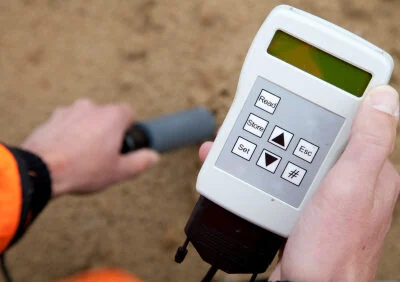Ensuring that our living and working environments are safe and healthy has become a paramount concern in contemporary times. With growing awareness of the role indoor air quality plays in our overall well-being, the importance of maintaining clean air cannot be overstated. Among the various contaminants that can impair indoor air quality, asbestos fibres pose a significant threat to human health. In this context, an asbestos air quality test becomes a critical procedure for safeguarding the health of occupants in any building that might contain asbestos-containing materials (ACMs).
Understanding Asbestos and Its Risks
Asbestos is a term used for a group of naturally occurring mineral fibres that are resistant to heat, electricity, and corrosion. These properties made asbestos a popular building material from the early 20th century until the late 1980s in Australia. However, it was later revealed that asbestos is a carcinogen, capable of causing serious diseases such as mesothelioma, asbestosis, and lung cancer when inhaled.
When materials containing asbestos are disturbed, fibres can be released into the air and become a health hazard. Inhaling these tiny, invisible fibres can lead to them lodging in the linings of the lungs, causing long-term damage. Given the severity of these health implications, overseeing the safety of environments potentially exposed to asbestos has become a non-negotiable aspect of property management.
The Significance of Asbestos Air Quality Testing
Asbestos air quality tests are essential to ascertain the presence and levels of asbestos fibres in the atmosphere of buildings. This form of testing is not only about compliance with health and safety regulations but is also a key preventive measure to protect humans from the lethal repercussions of asbestos exposure.
Testing is particularly important in older buildings, especially those constructed or renovated before the 1990s, where the use of ACMs was prevalent. Given the hazard it represents, only certified professionals should carry out an asbestos air quality test. This ensures that the testing is done safely, and the results are accurate and reliable.
The Process of Asbestos Air Quality Testing
The process involves a series of steps executed meticulously. It begins with a trained surveyor assessing the site for materials that could potentially release asbestos fibres. The actual air sampling then takes place over several hours, during which air is drawn through a filter known for capturing airborne particles. This filter is later examined in a laboratory under a microscope to detect and measure asbestos fibres.
Control measures, such as creating negative pressure environments and sealing off areas, may be implemented to prevent the spread of fibres during the testing. Importantly, ongoing monitoring may be recommended in situations where there is a risk of future fibre release.
Why Testing is Essential: Health and Legal Implications
Asbestos air quality testing holds critical importance due to both health concerns and legal requirements. From a health standpoint, identifying the level of exposure provides a basis for preventing serious health conditions that could arise from prolonged inhalation of asbestos fibres.
Legally, building owners, employers, and facility managers have a duty of care to ensure the safety of occupants and workers. In Australia, strict regulations govern the management and removal of asbestos, and non-compliance can result in hefty fines and legal action. Therefore, testing is not only a health measure but also a legal safeguard.
Interpreting Test Results
After experts have conducted the asbestos air quality test, interpreting the results with accuracy becomes the next crucial step. A certified assessor can decode the findings to determine whether the air quality conforms to the mandated safety standards. Based on the outcomes, recommendations can be made regarding the need for asbestos removal, containment, or additional protective measures.
In instances where the levels are found to be above the accepted limits, immediate action is imperative to mitigate the risk. The affected area may be evacuated, and remediation procedures, such as asbestos abatement or encapsulation, may be conducted to secure the site.
Maintenance and Preventative Strategies
Maintaining a low-risk environment necessitates ongoing vigilance and preventative strategies. This includes regular inspections, risk assessments, and implementing an asbestos management plan if necessary. Ensuring that such protocols are in place is essential for long-term indoor air safety, especially in buildings with known or potential asbestos exposure.
The role of an asbestos air quality test is critical in any comprehensive building maintenance schedule. It acts as an early warning system to prevent asbestos-related issues from escalating, thereby safeguarding the well-being of all individuals who frequent the property.
Conclusion: A Cornerstone of Health and Safety
Prevention is always better than cure, especially when dealing with a persistent and pervasive health risk like asbestos. Regular airborne asbestos fibre monitoring, through precise and professional air quality testing, is indispensable for ensuring that buildings are safe for occupation. By adopting a proactive stance on such matters, we not only protect current occupants but also secure a healthy environment for generations to come.
Whether it is a residential property, a commercial building, or a public space, ensuring the safety of the air we breathe indoors is a responsibility that must be diligently upheld. The asbestos air quality test is a fundamental tool in this pursuit, underpinning a holistic approach to environmental health management. In conclusion, enabling safe and healthy environments begins with recognizing and acting upon the importance of meticulous air quality testing, especially in the context of asbestos hazard management.
Additional Resources
For further information on asbestos air quality testing and professional services, you can visit enviroxconsulting.com.au. The expertise offered by certified professionals will guide you through the process of ensuring your environment is safe from asbestos hazards.






